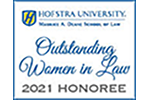After announcing its death when vacancy rates hovered around 20% to 30% during the most recent recession, the suburban office market has suddenly resurrected. The office market recovery has reached outside the city limits, more specifically into so-called “premier” locations where technology- and energy-related companies are driving growth.
According to CoStar, suburban markets have accounted for 87% of office demand, which is 13% more than their “fair share” based on the total market size, compared with CBD office markets. Suburban areas leading the way include Waltham-Watertown, Massachusetts; northwest Austin, Texas; Bellevue, Washington; at Katy Freeway West, Texas. Such markets make up just 19% of the office inventory but drew 29% of the demand over the last six quarters, according to CoStar data.
Suburban office absorption tends to perform well during good economic times and when the economy starts to recover, while CBD properties do better during difficult economic times. That’s because companies can take advantage of lower rental rates so they can secure space closer to the urban areas. But with the economy improving, office rental rates are starting to increase and many companies are staying away from the pricey CBD buildings and finding affordable rates outside the cities.
This is showing up in the net absorption rates. Cities with high absorption rates in their outlying areas include Sacramento and San Jose, California; Austin, Texas; Kansas City, Missouri; and Charlotte, North Carolina.
When it comes to commercial real estate, it’s not just about location. It’s also about representation. Before entering into any such transaction, please consult with an attorney who is experienced in commercial real estate law.

















